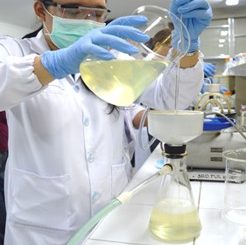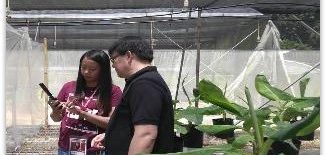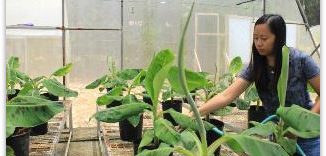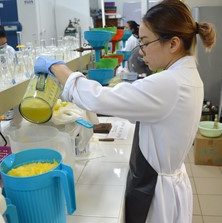The CRADLE Program aims to enable technological advancement and innovation of local companies and to support the growth of the Philippine Innovation ecosystem. Through the program, the academe and/or RDI in partnership with a Filipino company, undertakes research and development to improve the company’s products, processes, and services to become more competitive in their respective industries. Beneficiary-companies under this program must provide at least 20% counterpart funding and commit to adopt the technology that will be developed. This way, research outputs from the academe are directly translated commercially to the market.




DETAILS ABOUT THE PROGRAM
The Department of Science and Technology (DOST) is implementing the Collaborative Research and Development to Leverage Philippine Economy (CRADLE) Program as part of its Accelerated R&D Program for Capacity Building of R&D Institutions and Industrial Competitiveness under the Science for Change Program.
Through the CRADLE Program, an industry is expected to identify a problem while its partner Higher Education Institution (HEI) or Research Development Institution (RDI) will undertake the necessary research and development (R&D) to find solutions. A CRADLE project can have a maximum funding of Php 5M, to be completed for a period of one to three years.
To invigorate the Philippine innovation ecosystem, the DOST aims to:
- stimulate R&D collaboration between researchers, scientists and engineers (RSEs) in the academe and local private companies;
- support both the pursuit of basic R&D and the transition of its result to the industry;
- engage knowledge and technology generators, and Filipino industry players into a mutually beneficial relationship; and
- help the industry gain competitive edge in the market, through the development of innovative products, processes and/or service that are responsive to the changing local and global dynamics.
A CRADLE proposal must be:
- In line with the priority R&D areas and industries identified by the DOST and Department of Trade and Industry (DTI), namely;
- Agri-processing (includes drug and herbal development)
- Integrated Circuit Design
- Creative Industries/Knowledge-based Services
- ICT (includes Artificial Intelligence)
- Food and Nutrition
- Environment and Climate Change
- Agriculture, Fishery and Forestry
- Semi-conductor and Electronics
- Renewable Energy
- Industrial Waste Treatment
- Infrastructure and Logistics
- Manufacturing
- Technically viable and workable within the proposed duration, considering further adequate facilities, and the technical capability of the R&D team
- Commercially viable
- Safe for the society and the environment
*The evaluation and implementation of all CRADLE proposals shall follow the guidelines of the DOST Grants-in-Aid (GIA) Program.
- The HEI/RDI should have at least one industry partner
- The industry partner is expected to provide a counterpart funding of at least 20% of the total project cost
- Counterpart funding may be in cash, in-kind or person-hour support in the academe
- The HEI/RDI and the industry partner must not have any accountabilities with the DOST System
Proposal Requirements
- DOST Form 2B (Full blown proposal)*
- DOST Form A (LIB)*
- DOST Form B (Workplan)*
- Business Plan
*Prepared as prescribed in the Revised DOST-GIA Guidelines
Documentary Requirements
- Joint Endorsement Letter signed by the HEI/RDI and business head of agency
- Latest Business Registration Certificate (e.g. SEC, DTI or CDA)
- Business Permit in the last 3 years
- Technology Adoption Certificate (TAC)
- Draft Collaborative Research Agreement (CRA)
Supplementary Requirements
- Curriculum Vitae of the Project Team
- Company Profile
- Necessary documents as determined in the Revised DOST-GIA Guidelines for specific circumstances (e.g. approval from the institution’s ethics review board for research involving human subjects or in the case of animal subjects, approval from the Bureau of Animal Industry (BAI); clearance from the DOST Biosafety Committee for research proposals involving the use of GMOs under contained use, etc.)

